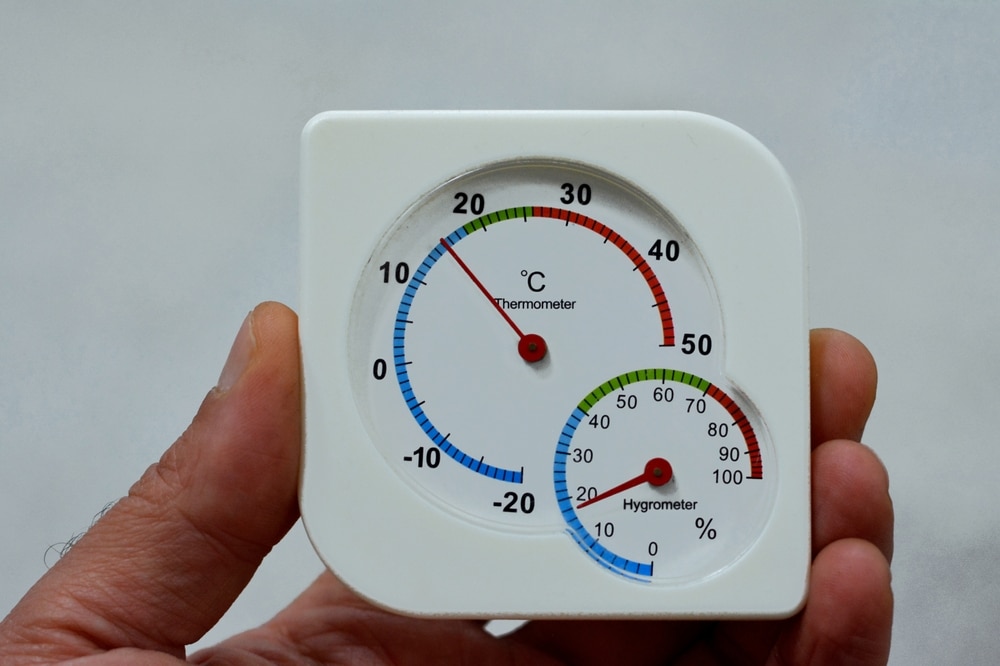
Humidity is a naturally occurring phenomenon and one that we measure in a couple of different ways. For those concerned about humidity levels in a building or given space, understanding the basic measures of humidity will be very helpful.
At 1 Source Portable Air, we're happy to offer portable dehumidifiers and several other forms of portable drying and air quality equipment. When considering humidity levels, the two most important metrics are absolute humidity and relative humidity. Here’s a look at what these terms refer to, how they're measured, what they mean when thinking about humidity levels in a given space, and what sort of levels may signal the need for a dehumidifier.
First, it's important to understand the difference between these two concepts. When you hear the term absolute humidity, what's being described isn't actually the humidity level of a given area; rather, it's the total amount of water vapor, or moisture, that air can contain at a given temperature. Expressed in grams of moisture per cubic meter of air, it's an indicator of how much humidity is possible in the air at the given temperature. As temperature goes up, the absolute humidity threshold tends to go up as well.
Relative humidity, on the other hand, is the ratio of the current moisture in the air to the highest possible absolute humidity. That is, if the relative humidity of a given space is 100 percent, it means that the air is holding absolutely as much water vapor as it can; this is what leads to rain and other moisture events.
For the vast majority of clients using dehumidifiers, humidity sensors, and other such products, relative humidity is the actual metric being read as it's the most indicative of the need for a dehumidifier. As such, when looking at sensor readings and trying to determine if there's an issue or not, relative humidity is usually where you'll want to start.
Generally speaking, most people tend to be comfortable within the range of 30-50 percent relative humidity. Lower than that and the air will become overly dry, leading to issues such as static electricity and skin irritation. On the flip side, higher readings may lead to mold growth, musty odors, and other moisture-related problems.
Although most people can easily manage in the range of 30-50 percent relative humidity, some applications, such as industrial environments and climate-controlled spaces, require much stricter humidity ranges. In such cases, a dehumidifier or other such device may be necessary for keeping relative humidity levels under control.
One of the silver linings of high humidity levels is that they tend to be fairly easy to detect, even without special equipment. Anyone who's taken a walk on a hot and sticky summer day can attest to this. You’ll also hear relative humidity referenced in weather forecasts as it impacts a day’s “feels like” temperature.
In instances where the relative humidity can easily be felt, the high humidity levels will likely cause issues without some sort of dehumidification solution. This natural detection of high relative humidity levels should not replace more precise measurements that can be achieved by dehumidifiers and humidity sensors, but it’s a solid indicator that a mechanical solution is required, especially if you’re located in a temperate or tropical climate or are responsible for a facility that struggles with circulation and humidity issues.
There are several reasons why clients may have a need for portable dehumidifiers, including:
Understanding the basics of relative humidity is important for anyone researching dehumidifiers and other moisture-management solutions. By managing relative humidity, it's possible to keep your building or space comfortable and free from mold.
For specific questions on how our products can help you, please don't hesitate to contact us at 1 Source Portable Air. We look forward to helping you find the right dehumidifier or other portable HVAC solution for your needs!